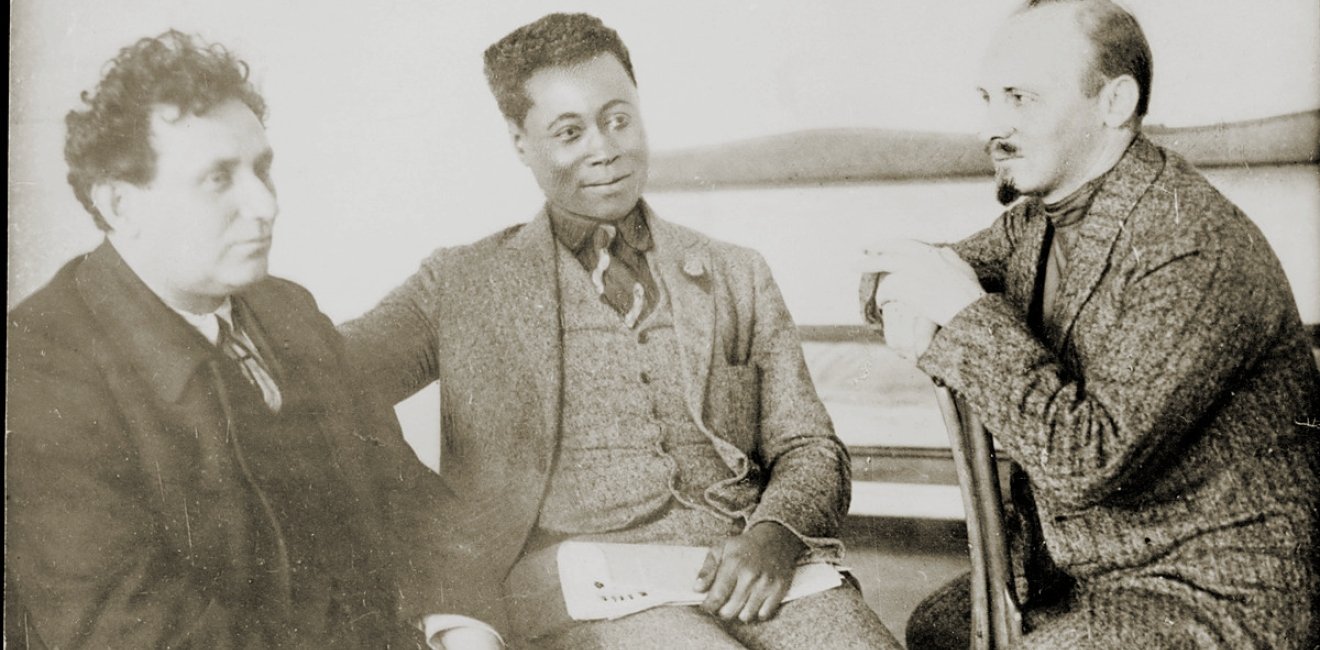
A blog of the Kennan Institute
BY KIMBERLY ST. JULIAN-VARNON
During the 2018 FIFA World Cup, Russia’s reputation of intolerance and even violence toward people of color made international headlines. Many commentators questioned the safety of the dozens of players of color scheduled to play in the country. Unfortunately, racially motivated violence against ethnic minorities goes beyond the soccer field and affects the lives of the thousands of African, Central Asian, and East Asian immigrants, students, and migrant workers living in Russia. However, there was a time when the Soviet Union, especially Soviet Russia, was a beacon of equality for people of color.
In the early 1930s, the Soviet Union engaged in rapid industrialization and the forced collectivization of agriculture. At the same time, African Americans were experiencing increasing levels of oppression and economic hardship in Depression-era America. The Soviets saw American workers, both black and white, as foreign specialists with an expertise in industry and modern agriculture that the Soviet working population lacked. The USSR actively recruited American workers, portraying itself as a bastion of equality for workers of all backgrounds, in contrast to the United States. Scores of African Americans moved to the Soviet Union to better their economic standing and improve their quality of life. The experiences of these individuals shed light on how the juxtaposition of the Soviet attempt to mold a new society and the region’s relative inexperience with black people offered African American visitors a unique opportunity to explore modes of black identity. What did it mean to be black in a land that, according to official doctrine, had no racism or white supremacy?
The most well-known of black travelers included significant cultural figures such as Langston Hughes, Paul Robeson, and Claude McKay, yet dozens of black travelers whose names do not grace the covers of literary tomes or music albums also explored the land of the Soviets. One of the most interesting visitors was Margaret Glasgow, who moved to Moscow in 1934 after her son wrote to her and described his new home in the USSR as “boiling like water in a kettle.”
Glasgow was a hairdresser in New York City who could not find work because white clients did not want her as their stylist. When she moved to Moscow, she was able to find work and became a shock worker (udarnik). She excelled in her work in the factory and remarked, “I’ve quite forgotten that I’m black. I simply feel like a human being; that’s all. I’ve been giving a special shock-brigader’s card for the dining-room.” While it is unlikely that she “forgot” about her blackness, Glasgow succeeded in adopting a new identity, that of a Soviet worker. Her high productivity in the factory offered her privileges that were denied to both African Americans in the United States and most workers in the Soviet Union.
Glasgow connected her conception of black identity to her experience of oppression and denial of work in New York, but her positive experience in the Soviet Union led her to develop an identity as a Soviet worker. Her realization speaks to a more fluid form of identity construction that the unique Soviet living environment at the time made possible.
On the other hand, Robert Robinson had a more nuanced and occasionally perilous experience. Robinson, the sole African American worker at a Ford Motor plant, left America in 1930 after Soviet representatives recruited him together with a handful of white workers. Robinson enjoyed the apparent lack of racial oppression in the Soviet Union, including the ability to work without fear of sabotage or physical harm. (In Detroit, he found that a co-worker had sabotaged his tooling machine in an effort to electrocute him.)
However, he was unable to forget his skin color. He considered Soviet anti-racism peculiar, especially when Soviet men encouraged their girlfriends to dance with him at worker events. He had to remind himself that the cultural context was significantly different from that in the United States. At that time, such an act could have gotten him killed in America, but the Soviets were attempting to show him how anti-racist they were. In this context, Robinson’s previous experience with American racism shaped both his initial expectations of Soviet behavior and his responses to his new surroundings.
Robinson became relatively famous in the Soviet Union after a brutal act of racism. Two white American workers attacked Robinson in 1930 after weeks of antagonizing him with verbal threats. Eventually, the Soviet court convicted both men of the assault and deported them from the Soviet Union. Although Robinson became a local celebrity, he was uncomfortable with the limelight and keenly aware of how the Soviet Union could and would use his assault to propagandize against the United States.
Robinson’s experiences in the Soviet Union differed from Glasgow’s and thus shaped his own conception of black identity. Though he appreciated the economic benefits his job provided, the oppression he experienced at the hands of white American workers and the pressure to “perform blackness” when around Soviet citizens made him continually aware of his racial difference. This environment reinforced his identity as a black person and left him no space to inculcate a Soviet worker identity. Despite official claims of anti-racism, many Soviet citizens still held ideas of black people built on stereotypes, an unfortunate result of a relative lack of experience with African American and African people. Robinson’s odyssey in the Soviet Union encompassed losing his American citizenship, gaining Soviet citizenship, leaving the Soviet Union, and finally returning to the United States in 1986.
The experiences and stories of these black travelers (and others) give historians and laypeople the chance to see the Soviet experiment from a unique perspective. They illustrate the agency of African American visitors to the USSR and black interest in the Soviet experiment. Through their words and stories, we can better understand Soviet nationality policy, Soviet social hierarchies, and the impact of American racial oppression on African American identity and experience. Their voices add to a growing body of literature on African American and African experiences in the Soviet Union during the twentieth century.
The opinions expressed in this article are those solely of the author and do not reflect the views of the Kennan Institute.
Author


Kennan Institute
After more than 50 years as a vital part of the Wilson Center legacy, the Kennan Institute has become an independent think tank. You can find the current website for the Kennan Institute at kennaninstitute.org. Please look for future announcements about partnership activities between the Wilson Center and the Kennan Institute at Wilson Center Press Room. The Kennan Institute is the premier US center for advanced research on Eurasia and the oldest and largest regional program at the Woodrow Wilson International Center for Scholars. The Kennan Institute is committed to improving American understanding of Russia, Ukraine, Central Asia, the South Caucasus, and the surrounding region through research and exchange. Read more

Explore More in The Russia File
Browse The Russia File
Chechnya as a Model of Modern Russia

Russia’s Indigenous Communities and the War in Ukraine

Gas and Power in a Changing US–Russia Relationship

